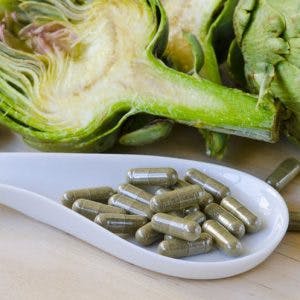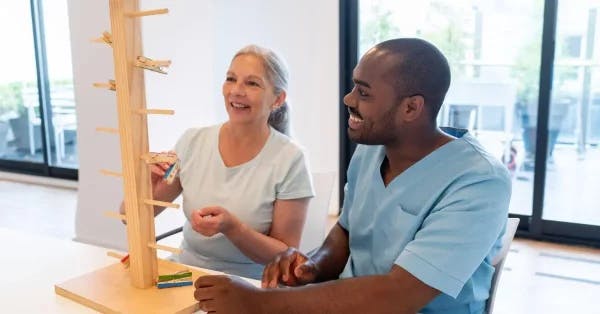Roughly 25% of stroke survivors experience a second stroke. This statistic is incredibly concerning when you consider how widespread the effects of a stroke are on a survivor’s daily life. For this reason, many survivors want to better-understand how to prevent a second stroke from taking place. Fortunately, there are ways you can help reduce your risk of experiencing a second stroke through several preventative practices.
In this article, we will review strategies to help you prevent a second stroke that are backed by research. As the American Stroke Association says, one is enough, so it is crucial to establish healthy habits that reduce secondary stroke risk for survivors.
7 Ways to Prevent a Second Stroke
There are many ways to maximize your health and prevent a second stroke, from improving your nutrition to practicing self-care. However, it is important to remember that establishing new habits takes time and consistency. By taking small steps to improve your health, you can gradually make a big impact on your quality of life. To help you get started, here are 7 ways you can help reduce your risk of a second stroke:
1. Know Your Stroke Risk Factors
A study by the American Academy of Neurology showed that over 96% of stroke patients who had a second stroke showed signs of at least one risk factor. This statistic is a great example of why awareness is the first step in preventing a second stroke. Talk with your doctor to see if you have any common stroke risk factors.
According to the CDC, these risk factors include:
- A previous stroke or TIA (transient ischemic attack)
- Hypertension (high blood pressure)
- Heart disease or atherosclerosis
- High cholesterol
- Diabetes
- Obesity
- Sickle cell disease
- Smoking
While genetics and family medical history do play a role in increased stroke risk, other factors can be treated or improved to help decrease your risk. For example, smoking increases stroke risk by 2-4 times, so finding resources to help you quit this habit can be life-changing. Just knowing what your risk factors are can help you take action to help prevent a second stroke. Work closely with your doctor and medical team to identify your personal risk factors and create a plan together to reach your goals.
2. Monitor Your Blood Pressure
High blood pressure is considered one of the most controllable risk factors for stroke. If you have high blood pressure, be sure to monitor it and take any medications your doctor has prescribed for you. Always make sure that you have your next refill of blood pressure medication on hand as missing even one dose of this type of medication puts you at a higher risk for stroke.
Aside from monitoring your blood pressure and taking medication, improving your nutrition and getting daily exercise are great ways to help manage high blood pressure.
3. Prioritize Daily Exercise
Did you know that regular moderate exercise can reduce your risk of stroke by over 20%? For this reason, regular physical activity is key in any stroke prevention program.
Moderate aerobic exercise means you are working hard enough to break a sweat but still able to carry a conversation, according to the CDC. This can include activities like brisk walking, riding a bike, taking a water aerobics class, or performing yard work. The American Heart Association recommends individuals get 150 minutes of moderate exercise each week to help maximize cardiovascular health.
Unfortunately, mobility impairments after a stroke can make regular exercise challenging. If this is your situation, try to find some sort of exercise that elevates your heart rate. Even some sitting exercises can do this, such as pushing your wheelchair if you use one, performing seated arm exercises quickly, or walking with your assistive device.
Additionally, make sure to work closely with your physical and occupational therapists as they will create a home exercise program that meets your individual needs. Participating in a daily rehabilitation program can help you improve motor skills that may be impaired after stroke. Check out these articles if you need help getting started with exercise after stroke:
- Guidelines for Exercise After Stroke
- Leg Exercises for Stroke Patients
- Arm Exercises for Stroke Patients
- Balance Exercises for Stroke Patients
4. Consider Preventive Surgeries if Advised
The risk of a second stroke increases with the presence of aneurysms. An aneurysm is a bulge in an artery due to weakness in the artery wall. This weakness increases the risk of artery rupture, which leads to hemorrhagic stroke.
To help reduce the risk of recurrent stroke, your doctor may recommend surgery if you have a known aneurysm. There are two aneurysm management surgeries that help reduce the risk of stroke: aneurysm clipping and endovascular coiling. Both surgeries can help prevent the rupture of an aneurysm and reduce the risk of hemorrhagic stroke. These surgeries are invasive treatments, so thoroughly discuss the benefits and risks with your doctor.
5. Manage Stress with Self-Care
Living with chronic stress is known to have detrimental effects on cardiovascular health, cognition, and other body systems. Consequently, elevated post-stroke stress levels can be a trigger for a cardiovascular event such as a stroke. Therefore, managing stress levels is an important consideration for preventing a second stroke.
Stroke recovery can be incredibly stressful due to health concerns, changes in independence or living situation, and financial strain. While some of these stressors may be difficult to eliminate, practicing stress-relieving techniques can help reduce the physical and emotional toll of post-stroke stress.
Techniques to reduce stress can include meditation, breathing exercises, and regular physical activity. Additionally, practicing good sleep habits and working with a trained psychologist are great ways to help mitigate stress. If you find that your situation is too overwhelming and you are experiencing depression or anxiety, talk to your doctor about possible medication options.
6. Improve your Nutrition
Your diet influences many stroke risk factors. For example, high cholesterol, atherosclerosis, and high blood pressure can all be affected by the foods you eat. Eating foods high in saturated fat, cholesterol, or sodium can increase the risk of stroke and other cardiovascular complications.
To help prevent a second stroke, try replacing those foods with healthier foods for stroke recovery. Foods that are high in vitamins, omega-3s, and antioxidants can help to improve cardiovascular health and increase your energy levels. This includes foods such as leafy greens, blueberries, salmon, flaxseeds, and other lean proteins. Additionally, there is substantial evidence supporting the Mediterranean diet as a way of eating that decreases cardiovascular risk.
Many stroke survivors also have the opportunity to work with a dietician at some point during the stroke recovery process. Make sure to take advantage of this opportunity as dieticians can provide helpful guidance for improving your nutrition to maximize your recovery and overall wellness. Dietary changes can be difficult, but these changes are one of the most impactful ways to reduce cardiovascular risk and help prevent a second stroke.
7. Talk with your Doctor About Neuro-Protective Vitamins
Boosting your intake of certain nutrients can improve your overall health and help prevent a second stroke. However, it can be extremely challenging to get optimal amounts of these nutrients from the food we eat. In some cases, vitamins and supplements can help fill in the gap when we need extra help.
Some of the top vitamins for stroke recovery include vitamin D, probiotics, CoQ10, vitamin B3, and fish oil. However, check with your doctor before you add any vitamins or supplements to your daily regimen, as they can potentially interfere with medications. Additionally, it is important to try to get as many vitamins and minerals as possible from your diet. Supplements and vitamins are meant to be a helpful adjunct to a healthy diet and lifestyle.
How to Prevent a Second Stroke and Save a Life
The recovery journey after a stroke can feel long, overwhelming, and often frustrating because of the major life changes that can accompany this neurological injury. This is compounded when survivors experience fear or anxiety about experiencing a second stroke. Thankfully, there are ways you can reduce second-stroke risk and improve your overall health. This includes understanding your risk factors and making changes to habits such as your diet and lifestyle.
Be sure to keep your doctor in the loop regarding any sudden changes you make to your daily routine. Your doctor has a better understanding of your preexisting medical conditions and may provide insight on any diet changes, exercises, or supplements you want to try.
While some lifestyle changes can be difficult, the benefits are well worth the effort. Just small daily changes can add up quickly and can help you prevent a second stroke. Consistency is key, so make a plan you can stick to and lean on support from those around you as you navigate your recovery journey.










